Media | Articles
First Look Review: 2024 Cadillac Lyriq 600E AWD
The market for luxury SUVs has never been more competitive, particularly among the battery-electrics. As a posh, electric crossover starting around $60K, introduced for 2023, the Cadillac Lyriq already had its work cut out. However, if you’ve been keeping track of The General in the past four or five years, you’ll know that the Lyriq is also the first mainstream model on GM’s EV architecture. (We’re disregarding the $110K Hummer EV.)
GM has a lot to prove about how it rolls out an EV. The stakes are even higher in the case of the Lyriq. It bears the Cadillac crest, and Cadillac is determined to reclaim its old mantle as The Standard of the World. The launch of the Lyriq hasn’t been without its teething problems, though. If you’re intrigued by a classy EV that emphasizes comfort above all and style throughout, read on to discover the good along with the rough edges.
Those who remain skeptical of EVs in general will find plenty to critique about the Lyriq. It’s the first built on the BEV3 platform, which also underpins the Chevrolet Equinox and Blazer EVs, the Cruise Origin, and the Cadillac Celestiq. Underlined by the issues and updates of the Blazer EV, the introduction of the early BEV3s hasn’t been smooth. In the case of the Lyriq, initial software problems muted the audio and messed with the lights inside and out; a panel on the interior of the tailgate cracked in cold weather; and another software problem blacked-out the instrument panel. Because of recalls, supply chain issues, or both, thousands of first-year vehicle deliveries were delayed. As of 2024, production numbers are up, but the recalls haven’t stopped coming: Earlier this month, Cadillac recalled all AWD models—96 percent of all Lyriqs sold—for a faulty ABS system that could just … lose pressure.



That said, new ICE-powered cars aren’t immune to such issues, so we were excited to get to know the Lyriq over the course of a few days. The vehicle on review is a 2024 Lyriq AWD Luxury equipped with Super Cruise, the latter part of a $4300 step from the “Luxury 1” to the “Luxury 2” trim that also includes the powerful AKG stereo. Adding Super Cruise is a bargain compared to speccing a Tesla Model X with Full Self Driving (FSD), which costs an eye-popping $8000 and is far less predictable than Super Cruise, one of the best driver-assist systems available. FSD costs more than all the options on our Lyriq, even if you count the $3500 upcharge from the 340-hp, 314-mile RWD to the 500-hp AWD model with 307 miles of range. The other add-ons included a two-panel sliding sunroof with an equally large shade ($1600), a black painted roof ($600), and a 19.2 KW AC charging module for $1480. (You probably don’t need the third item, but check this forum thread for more information.)
Marketplace
Buy and sell classics with confidence
Specs: 2024 Cadillac Lyriq AWD Luxury
- Price: $70,590/$77,770 (base / tested)
- Powertrain: Two electric motors, single-speed transmission, 102-kWh nickel-cobalt-manganese-aluminum battery pack
- Horsepower: 500 (GM est’d.)
- Torque: 450 lb-ft (GM est’d.)
- Layout: Twin-motor, five-seat SUV
- Weight: 5789–5810 pounds
- 0–60 mph: 4.6 (est.)
- Top Speed: 130 mph
- EPA Fuel Economy (MPGe): 96/81/89 city/highway/combined, or 38 kWh/100 mi.
- Competitors: Tesla Model X, Porsche Macan EV, Genesis Electrified EV60, BMW iX, Audi SQ6 e-tron
This is only the second production year of the Lyriq, and the two years look identical. That’s a good thing, to our eyes: The Lyriq is a vehicle with handsome proportions, well-executed surfacing, and interesting details, especially in the lighting signatures. More importantly, the Lyriq introduces styling cues you’ll find on every Cadillac from its globe-trotting race car to the Escalade: Vertical headlamps with “stacked” units, tail-lamps with horizontal striations, a hood that comes to a gentle point, and softly bulging rear quarter panels.



The interior is lovely, though the infotainment system can be frustrating. (More on that shortly.) The cabin is clean and restrained, airier than a Macan EV’s and warmer than the mimimalist one of the Model X. Analog controls abound, bearing the obvious marks of thoughtful design: The knurled AC vent switches are so satisfying to twist. The volume knob is a little roller on the center console, with similar action and a diamond-pattern texture that matches the rims of the cupholders. Changing a song using the haptic panel on steering-wheel produces a metallic snick. The Multi Function Controller is the one disappointment, which is strange, considering it’s designed to let you operate the infotainment screen without touching it, and presumably a high touch point. When you press down on the MFC, the sound it yields is too light and plastic. One wants a good, weighty thunk.
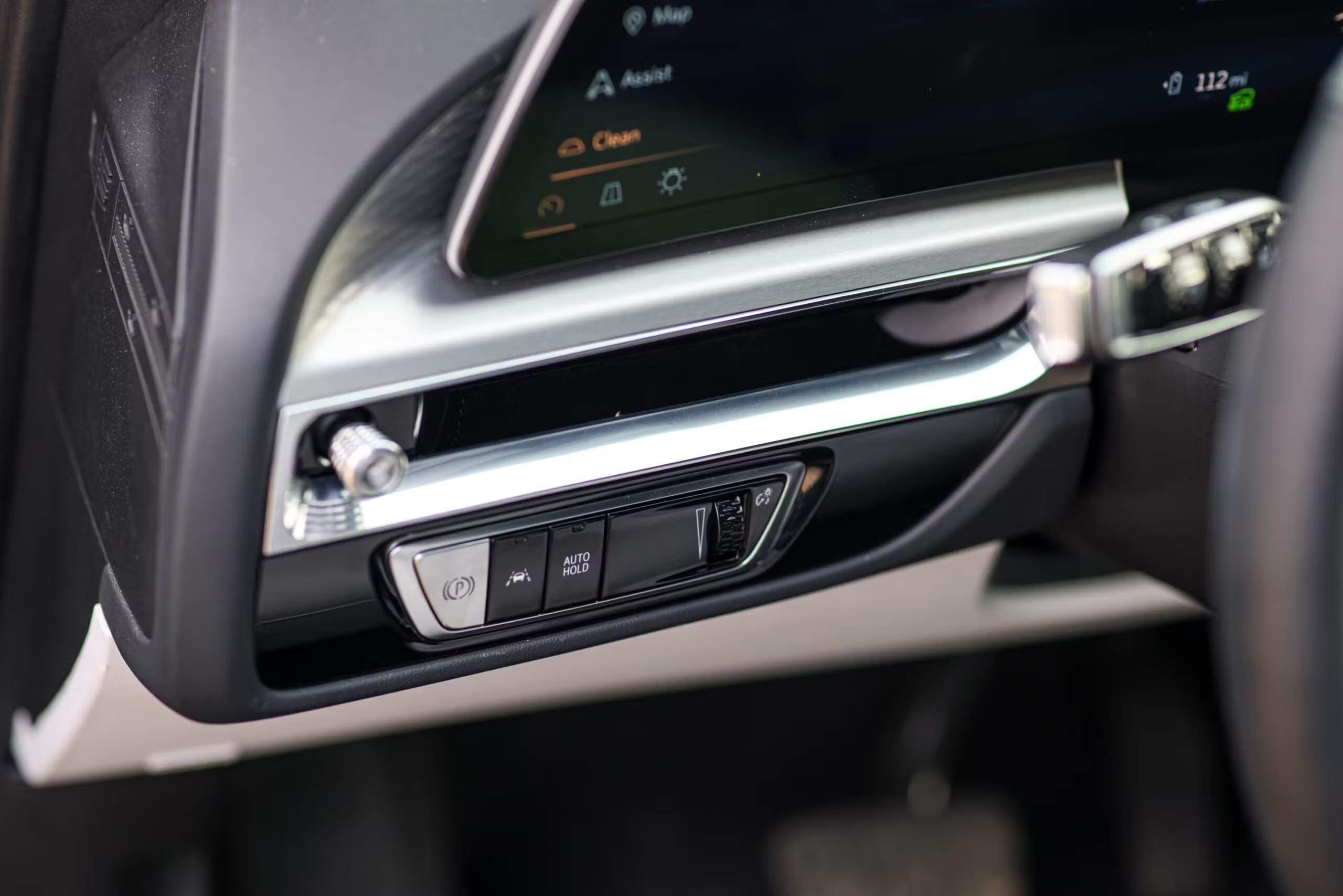


As high-quality as most of them are, a few physical controls are overtaxed in their duties, like the round button on the door. You use it to adjust both lumbar support on your seat and to activate the massaging function of the chairs, and the difference between selecting one or the other requires fine adjustment. The left stalk on the steering column operates blinkers (up/down) and highbeams (forward/back) as expected—but you must also use it to spritz your windshield clean (button on the end, a heavy press), control your windshield wipers (the first dial), and to wash the rear camera (the second). You get the feeling that the design team succeeded in barring a third stalk from the steering column.



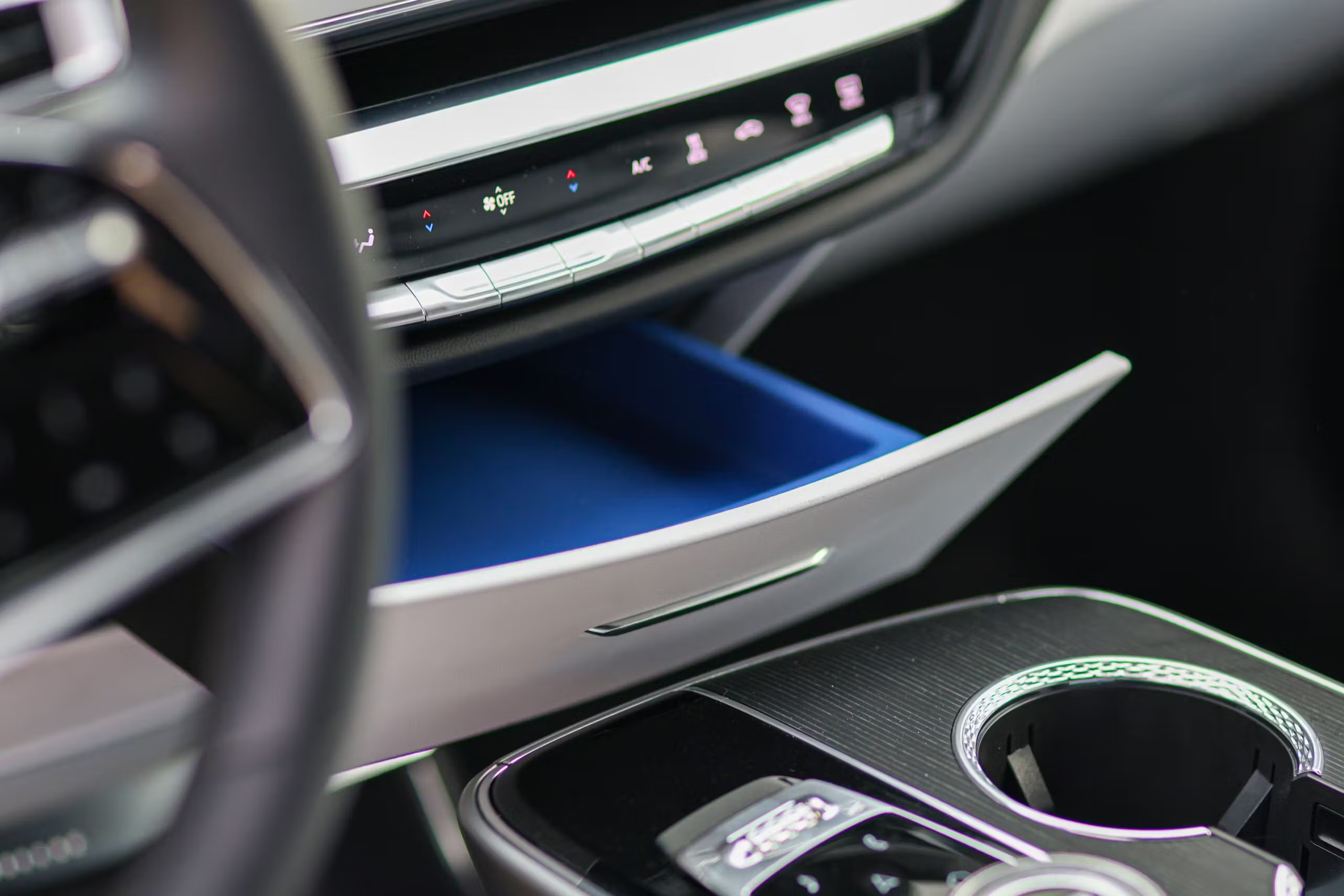
Storage cubbies are a source of delight: The absence of a transmission tunnel accommodates a flat, rectangular area on the floor, below the row of buttons, and finished in whatever accent color and material that extends through the rest of your interior. (In this case, blue.) If you tend to carry a tote bag, or anything that’s big enough for a 13-inch laptop, it’s not easy to stow your bag here, but smaller purses would be contained nicely between its edges. The artfully stitched tray is perfectly sized, however, for a box of In ‘n’ Out. Another delightful storage space is the drawer hidden directly under the row of buttons below the touchscreen. It, too, is upholstered in a festive accent color, and is perfect for keeping earrings or lip balm out of cupholders, where they would introduce insecure footing for a drink.
The infotainment system is a reminder of GM’s high ambitions and its chief challenges. The glass itself is impressive, curved not only horizontally but also vertically. For now, only GM has such a screen; since it worked with the supplier to make this screen reality, it also enjoys exclusive rights for a certain period of time. Resolution and brightness are both excellent.
The Google-backed software, however, seems uneasy. Sending directions via Google Maps on a smartphone to the car didn’t always work on the first try. On several occasions, once phone and car had communicated, the blue button to start directions appeared not on the touch-sensitive right portion of the vehicle display, but the left one. Not until the driver opened Google Maps on the right-side display, and hit start there, would the other side catch up. Even when all is working as it should, the Google system is limited. It doesn’t have full access to the vehicle, so you can’t use voice control to turn on the heated steering wheel or read off tire pressures, as you can in the most recent BMWs. Essential? Of course not, but if the Lyriq previews a vision of Cadillac’s connected future, you’d hope it could out-tech a base 5 Series.

Like most electric vehicles, the Lyriq’s on-road personality is largely defined by its weight, stiffness, torque, and low center of gravity. All 5700+ pounds of Lyriq swings through sweeping bends on smooth pavement with little roll, squeezing up the grades of California’s Highway 17 and causing the powertrain no discernable stress. The single paddle on the left side of the steering wheel controls on-demand regenerative braking and is great for bleeding speed before a bend. The active noise cancellation, tuned to eliminate road noise, and acoustic laminated glass make for a quite serene experience.
Tight, twisty roads with rough pavement bring out less pleasant sides of the car. The noise cancelation can’t keep up with 22-inch wheels and 40-section tires on imperfect surfaces—and we’re not talking potholes, just spiderwebbed depressions in the road. The suspension protects you from the worst impacts but can’t quite compensate for the stiffness of the body, so you get jostled a bit in your chair. The brakes are powerful, which is good, and the blending between regenerative and mechanical braking is nicely tuned—but hauling this chunkster down to a stop is a “whoa, nelly” experience. You’ll want a gentle foot on the throttle, too; all that instant torque can jolt you forward in quite a non-luxurious hurry.

A brief aside to those who relate to “range anxiety”: Now that 300-mile battery packs are easily found in the $30K–$60K range (shoutout to the Equinox EV), your chief concern is charging infrastructure. Google Maps, built into the Lyriq like all other GM EVs, does a good job of showing chargers along your route or in your area, along with information on the speed of each and whether they are occupied. During our time in the Monterey area, stations were easy to find, even if they were in less-than-scenic places, like grocery stores and banks. But more than one station simply did not work. DC fast chargers, the kind that will zap you to full in minutes, rather than hours, were few and far between. It’s quite likely that you could roadtrip across multiple states and trust Google to find stations along your route: The more valid concerns are whether those stations work and how much time charging will add to your trip.
Conservative buyers who need to cover longer distances may wish to consider waiting to buy their Lyriq until GM’s access to the Tesla Supercharger network is set in stone. The Lyriq won’t come with the necessary charge port style (NACS) until next year, and the adaptor from GM for its current EVs was—and then wasn’t—available for purchase from a dealer. One reason may be Tesla: The company complicated the situation by firing everyone who staffed its charger system at the end of April. Those for whom the Lyriq would be a second car or who typically travel under 300 miles in a given day will have no problem topping their car off every night at home.

In a very crowded field, the Lyriq manages to distinguish itself visually, offer a pleasant and comfortable driving experience, and provide enough range to satisfy most buyers. If the size or price are prohibitive, Cadillac is coming out with the Optiq, a younger, smaller sibling to the Lyriq, aimed specifically at first-time buyers of EVs in the luxury space. The Lyriq will likely appeal most to current EV owners who know the charging drill, are tired of the sporting pretensions of other battery-electric SUVs below $100K, and want something luxury-focused. Hopefully, the worst of its growing pains are done.


2024 Cadillac Lyriq AWD Luxury
Highs: Mature exterior design, thoughtful analog details throughout interior, extensive dealer network.
Lows: GM is still issuing significant recalls to the Lyriq, access to Supercharger network still hasn’t materialized.
Summary: GM’s first Ultium-powered SUV nails designs and comfort, but, in its second year, continues to stumble.



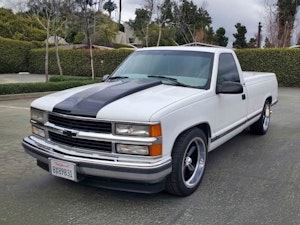
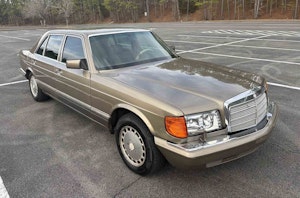










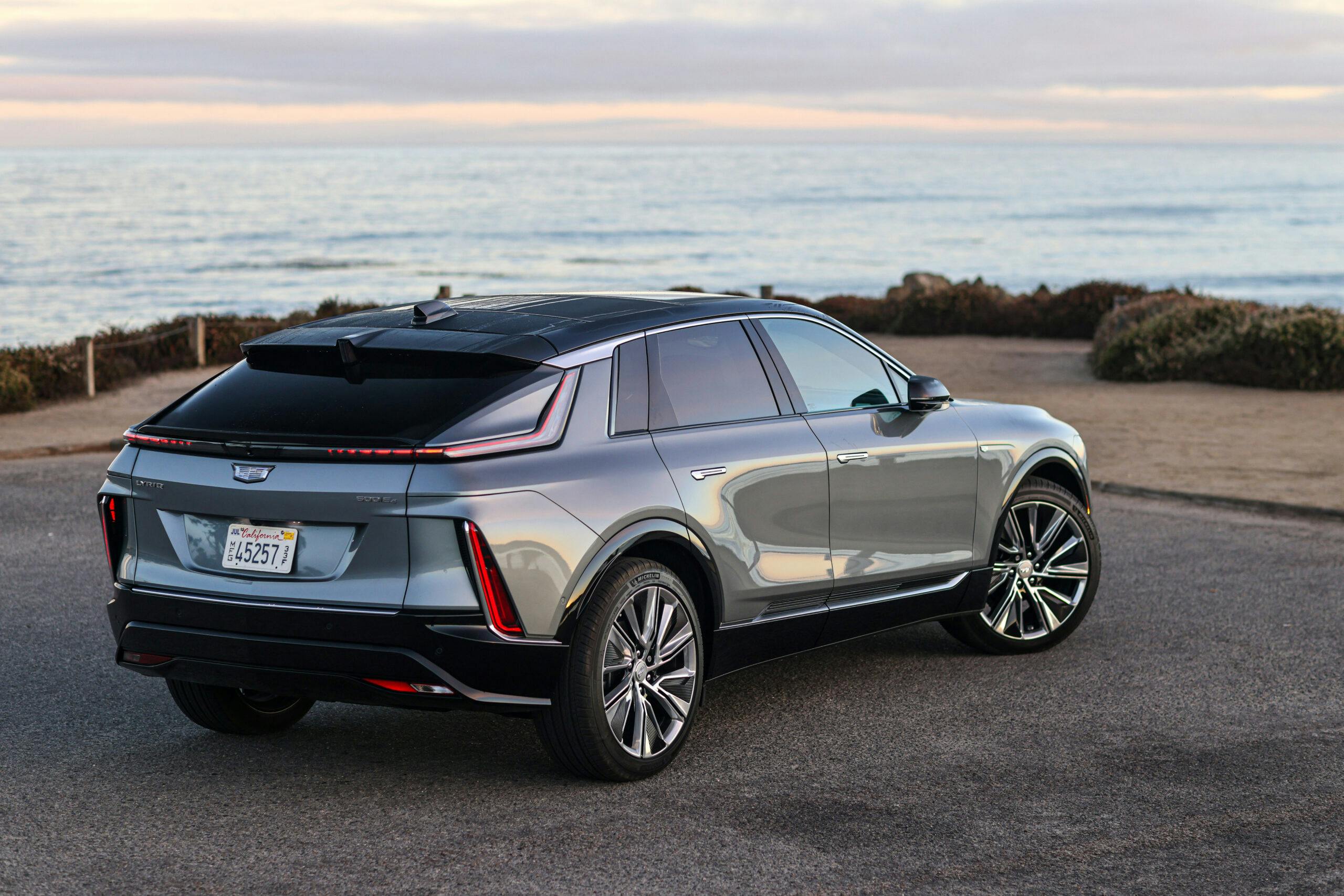
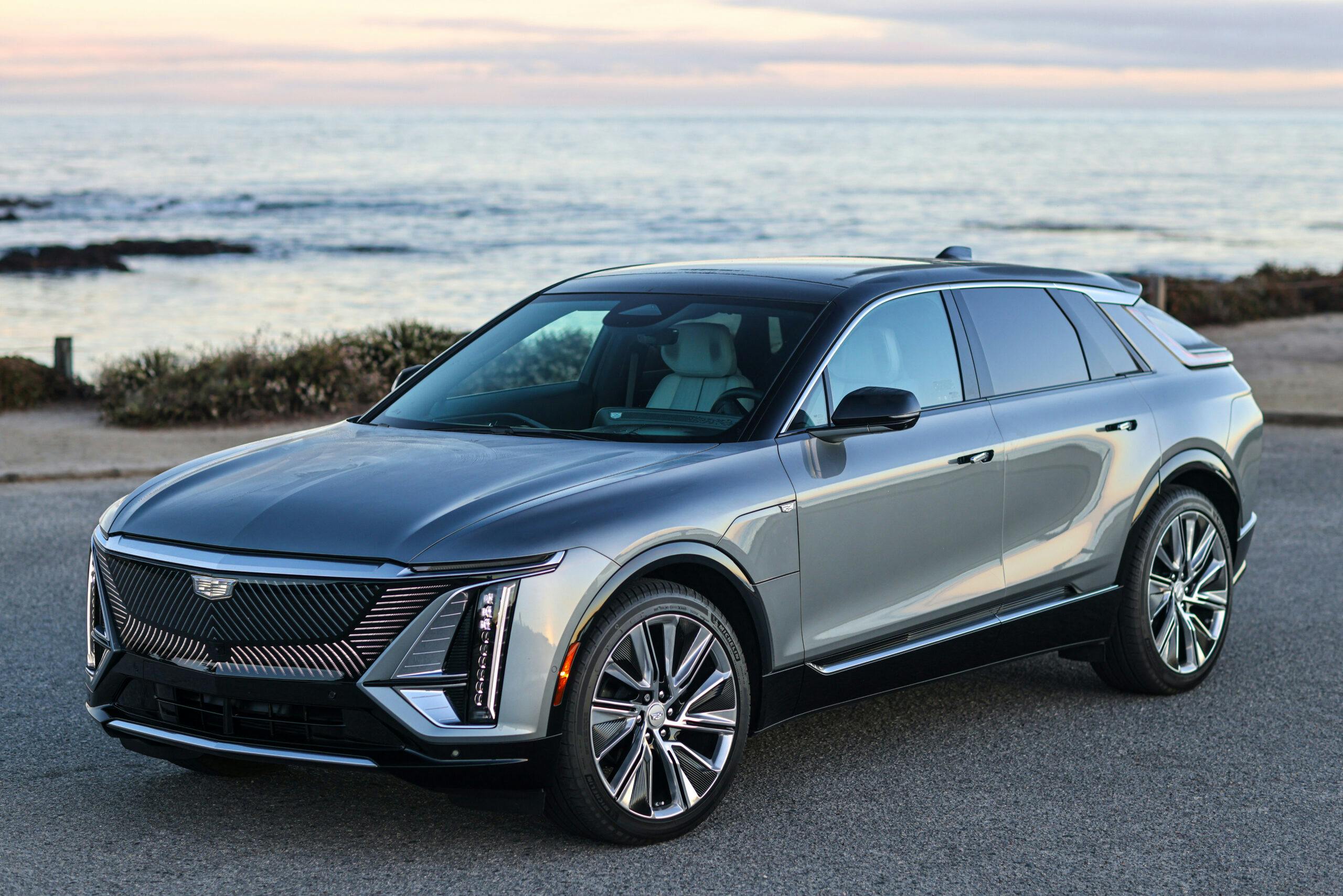




















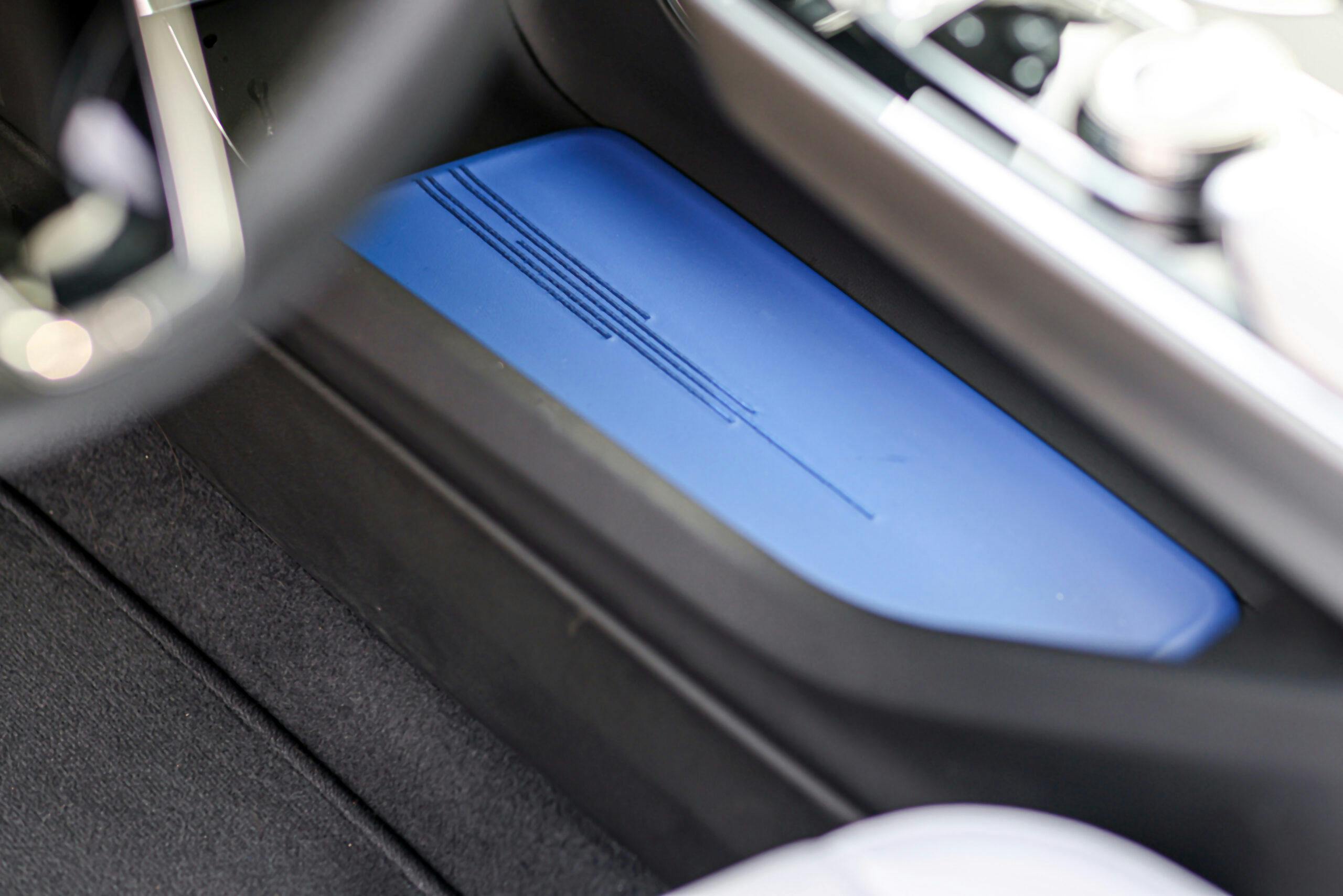



















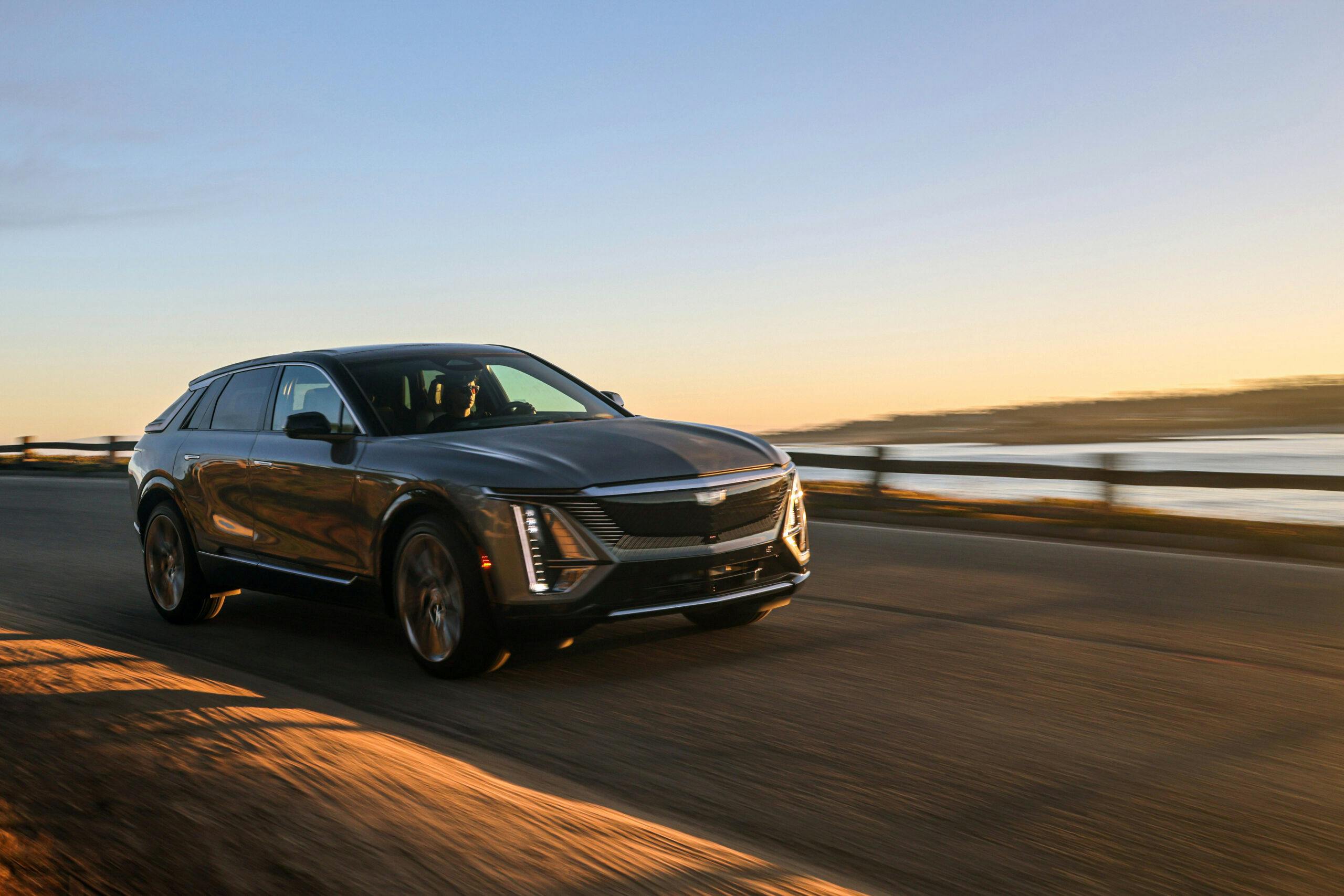
“Compatible with J1772 and CCS1, but not NACS or CHAdeMO.”
That one line — along with unreliable charger issues — represents 75% of the reason why this admittedly handsome SUV will remain a niche vehicle. I have NEVER driven my ICE vehicle wondering if I can get fuel at WaWa, or BP, or Royal Farms, or Valero, etc. — I know I can stop ANYWHERE and fuel up in about 2 or 3 minutes and be on my way. That might not be important to automotive journalists or latte-swilling DINKs who enjoy their 45-90 minute inconvenience stops, but for those of us hauling young kids around, it’s a deal-breaker. I’d wager it is *THE* deal-breaker!
Too many problems with Google, ABS, and cracking of a tailgate shows General Motors quality is no longer the Standard of the World.
They need to focus on execution and clearly the management is incompetent.
Interesting that in the competitors list the Acura ZDX is not mentioned as the share the same platform?
The question would be – who did the better job at the end of the line between the two?
The motor and transmission come from China. – GM could not find a supplier in North America? $70k+ for this thing. No thanks.
I love my 2024 Lyriq. As a former Tesla Model 3 owner, I couldn’t wait to dump that thing and get back into an actual car. The Lyriq is precisely that, it has buttons, switches, & knobs that were all thoughtfully designed AND it drives like a dream. Unlike with most EVs, people who see and/or ride in a Lyriq don’t even realize it’s an EV, it’s just a great looking car that happens to have an e-motor. Other brands should take notice and design their EVs to look and operate like actual cars instead of tablets-on-wheels.
I signed up for the first AWD Lyriq sold in my area in 2023. It was never made and they transferred my order to 2024. I was told in February of this year that my car had been made and they were waiting on delivery. I still haven’t heard from them. I’m beginning to think the dealerships don’t want to sell them.